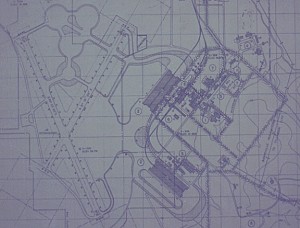The United States had always been interested in utilizing a Lighter-Than-Air (LTA) Fleet, to supplement its strategic operations, but it lacked the technical knowledge to successfully implement one. Although hydrogen-filled observation balloons had previously been used during the American Civil War, interest was soon lost, and no further development to this program would occur until the early 1900’s. The U.S. Navy would be the first military branch to create an experimental program.

Originally, the Navy created a small fleet of kite balloons, for use as scouting platforms on battleships. These first LTA’s were similar to current-day air balloons, but because they were filled with hydrogen, the Navy found them to be both dangerous and cumbersome to operate on-board its ships. The idea proved to be more practical on paper, than anything else. Nonetheless, the Navy continued to pursue its goal of creating an effective observation tool.
Given the designation DN-1, a new type of non-rigid airship was commissioned, and delivered to the Navy in December 1916. With high expectations of this new airship, a novel floating hangar was designed to house her. But again, this experiment was considered a complete and total failure. DN-1 was grossly overweight, leaked considerably, and was severely underpowered. After being damaged during her maiden tow out to the floating hangar, she became the first and last of her kind. Surprisingly, the Navy refused to give up, and soon went back to the drawing boards.

This time, the United States did its homework, and a joint Army-Navy committee was formed to explore the aerodynamic applications of LTA design. The result, was the B-Class Dirigible, which proved to be highly successful.
Over the years, several variations and classes of blimps were developed, but aside from short-range ship escort, their use was primarily limited to flight training, research, and as spotting platforms on naval ships. When World War I came to a close, the Armistice was signed, and the U.S. blimp fleet was drastically reduced. By this time, Germany had become the undisputed leader in producing lighter-than-air craft. Perhaps the most prominently remembered of these airships, is the Hindenburg.
Despite the LTA program slowing to a crawl, the Navy was still enchanted with the yet unexplored possibilities of these airships. After learning that the Germans had perfected a new lightweight aluminum alloy, the U.S. Navy once again became excited about LTA technology. This excitement lead to the creation of an entirely new class of blimp, envisioned to serve as aircraft carriers.

Originally, the U.S. had expected to receive two airships from Germany after the war, but each had unfortunately been destroyed prior to their transfer. As compensation, it was decided by the Allied Nations, that Germany should build a non-military airship, similar to that of the Zeppelin. Upon receipt, the Navy aggressively set forth to construct its first base dedicated to supporting airships.
It was not until 1935, that the Navy reconsidered the value and hope that it placed upon these massive craft. Of the five rigid airships constructed, all were destroyed in tragic or deadly crashes. There were two exceptions: the USS Los Angeles, which was decommissioned in 1934, and the USS Macon. But, in February 1935, the Macon’s luck had run out, and she too, suffered the same fate as her sisters. The U.S. Navy had finally come to the realization, that it could not possibly afford to continue suffering such tragic losses, and prohibitively high maintenance costs.
Shortly after the loss of the Macon, the U.S. Navy still amazingly determined, again tried its hand at LTA technology. This time however, with non-rigid, helium-filled airships. The Navy acquired the Defender from Goodyear (designated G-1), and by 1937, had purchased two additional blimps, similar in nature. These airships would soon become the foundation for the resurrected LTA fleet.

By 1940, the threat of World War II loomed upon the horizon, and the United States was anxious to increase its blimp fleet. With the knowledge that the G-class blimp had demonstrated a remarkable amount of reliability, an ambitious goal was set to commission 48 new blimps. Each of these were to be designated as K-class, and would require an unprecedented number of bases to support them.
NAS Tillamook was now on the drawing board, and so it is here, that our tale begins to unfold…